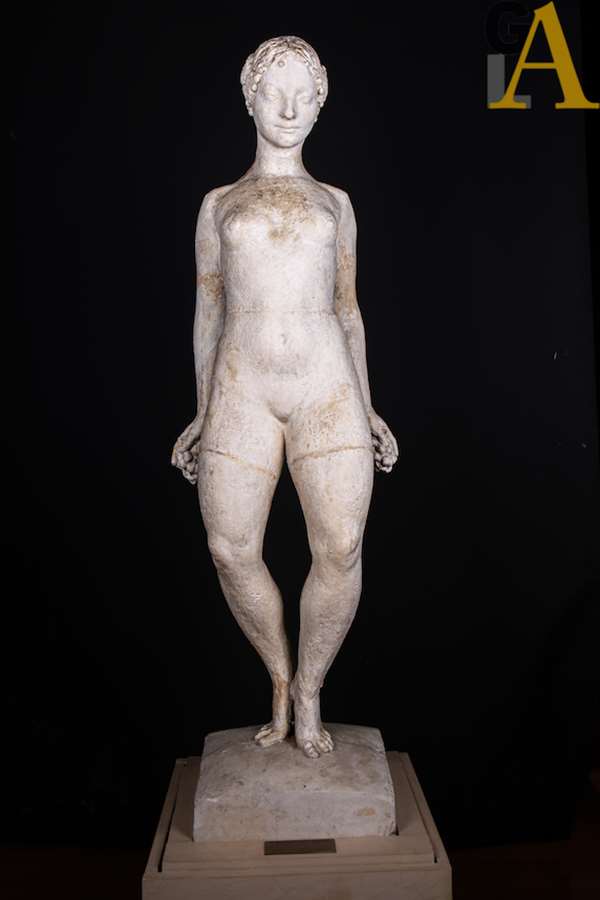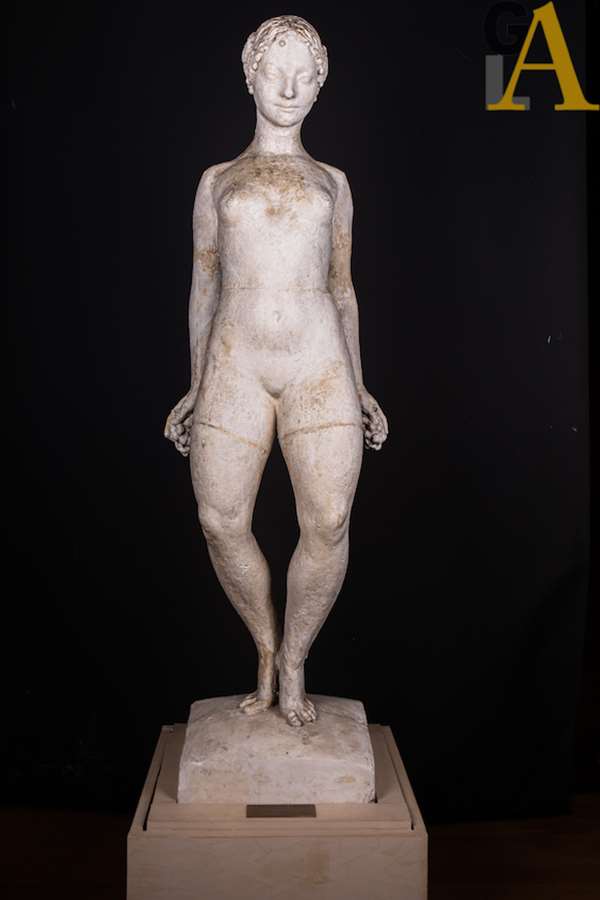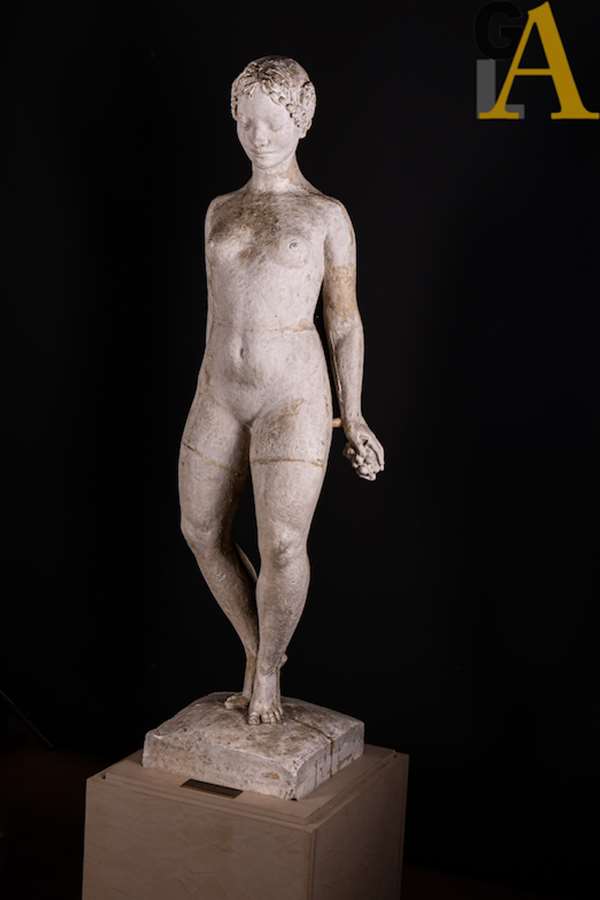Dancer with bunches of grapes
In this dancer “the rhythm of the movement returns on itself and closes in the widening of the hip, over the feet pointed on the sensitive vault of the base. The head, small and dense as a nut, with the slightly marked features, with the scaly bob hair, recalls the beheaded goddesses of Selinunte, here revised with an Art Deco style.” Thus, Raffaele Monti (1976) who, reconstructing the phases of the sculptor’s artwork in his Parisian stay, initially with components à la Troubetzkoy, à la Rodin, then symbolist ones up to the solid and synthetic gentle vibrations with a Bourdelle style, sees in his piece of art the most resolved example of a new style: Art Deco rhythms are connected to the classical tradition thus resulting in a ‘private’ sculpture that does not rise above the spectator. Beyond the well defined Rodin-Bourdelle boundary, in the lively Parisian milieu, cultural events and literary movements that had extraordinary reflections in the field of figurative arts took place. An example was the presence and the activities of the Russian symbolists, who found their first great recognition in the Parisian Exhibition of 1916 at the Grand Palais, organized by Sergei Diaghilev, known as the genial manager of Nijinskij and the Russian Ballets.
Floor:
Room: Early Works
Year: 1912
Author: Libero Andreotti





